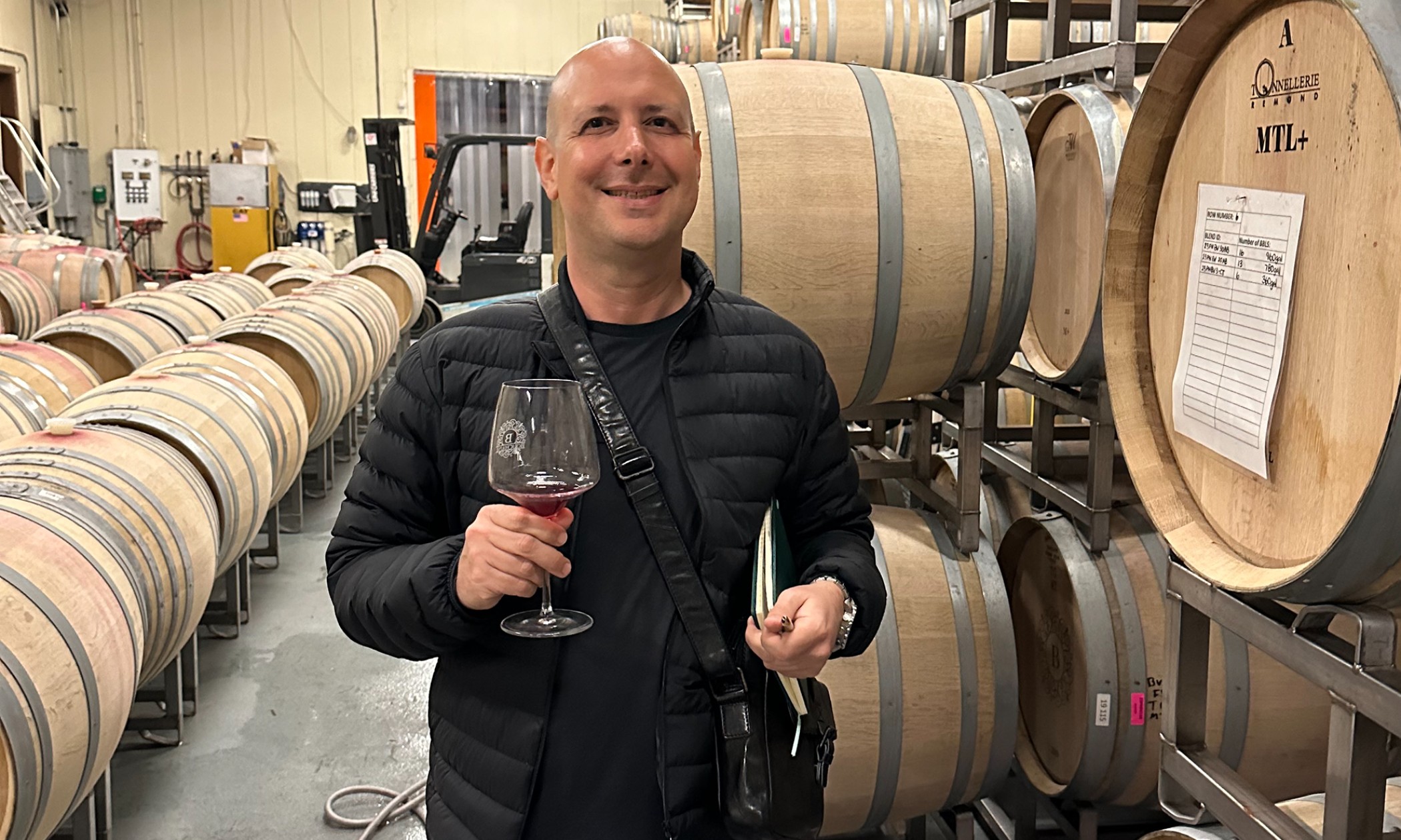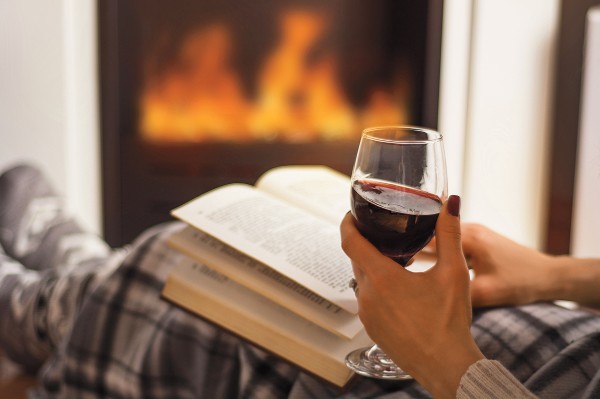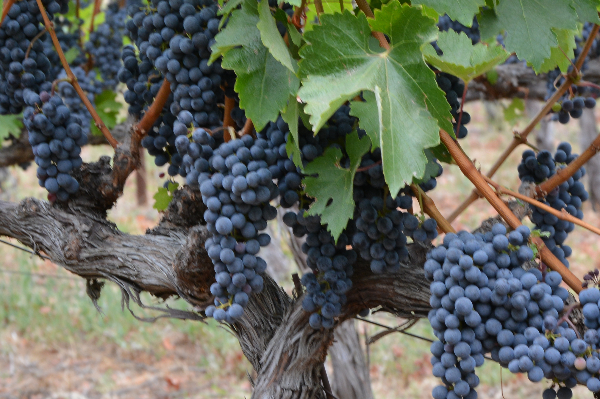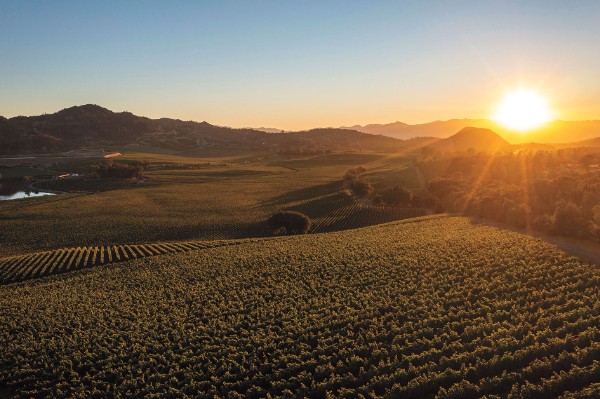Marc Bloom won the Napa Valley Vintners APAC Scholarship for achieving the highest mark in the Asia Pacific region, in the WSET Level 4 Diploma in Wines, class of 2023. Marc visited the Napa Valley in April 2024. Below is an account of his experience.
Winning the prestigious scholarship from Napa Valley Vintners provided me with the perfect opportunity to explore Napa Valley in depth. My itinerary was an exceptionally well-tailored expression of the region’s varied offerings. My intention was to experience Napa for what it is, to grasp its point of difference, and to understand what truly makes this place special.
The country within which we reside is largely dominated by wines that originate there. Australia, being the only country in the world which is also a continent, produces a plethora of wine styles, many of which set them apart and give them a unique point of difference. Shiraz, a grape referred to as Syrah where it originates from in France, is produced in a unique style much envied around the world. My desire to truly understand Napa Valley’s wines involved ‘as much as possible’ bracketing my assumptions about what the wines should taste like, not making comparison-based quality judgments, and ultimately immersing myself in the overall experience of being there and tasting them.
My stay left me deeply moved. Every aspect of the Napa experience is perfectly engineered. From the iconic welcome sign (where like most others I stopped to have a photo taken), impeccably manicured streets swarming with tasting rooms, luxury boutiques and buzzing restaurants. Nature has provided an idyllic setting. Traversing the region in either direction, one is surrounded by the picturesque Vaca mountains on one side, and the Mayacamas on the other. There isn’t a spot deprived of a beautiful view. The Napa Valley is unashamedly a super-premium wine growing region. This is evident from the luxury cars gracefully driving up and down the palm tree laden Route 29, to the pristine cellar doors where not a single detail has been neglected.
Wine tasting is a well-curated affair. The majority of tastings are by appointment only. I’d originally been warned by my sponsor that these tastings can be drawn-out affairs, so I shouldn’t expect to do more than two per day. This proved to be more than sufficient. Each experience was golden. I felt like a red carpet had been laid out for me wherever I went. The success of Napa as a region is mostly based on direct-to-consumer sales. Every tasting is ultimately an invitation to become a member of a cellar club which affords exclusive access to top-shelf wines, as well as a host of other bells and whistles. It is difficult not to be swayed. A small percentage of these wines are exported, and here in Australia, they are rare luxuries.
As a wine-growing region, Napa Valley has a long history that predates the prestige it has attained in the last fifty or so years. Reference is often made to the 1976 Judgement of Paris where two Napa wines triumphed over their French counterparts. A testimony to their ongoing quality. It was very apparent in many of the conversations that I had, that old world, and the French in particular, have and continue to be a standard of comparison. This is an unfortunate default in the new world. Although winemaking started in the old world, speaking from the perspective of an immigrant, when we move from one part of the world to another, we gradually adapt to our new surroundings, and become something new ourselves. We may echo that from where we came, but evolve into something different. This is truly exciting and wonderful. The two hallmarks of the region, arguably Cabernet Sauvignon and Chardonnay, may have originated in France, but have well and truly found a loving home in the Napa Valley. These wines are terroir specific, and can never be anything but ‘where they are grown’. They are quintessentially Napa Valley, and more poetically put, ‘bottled sunshine’.
My adventure began at two of the valley’s most historically significant estates: Schramsberg Vineyards and Chateau Montelena.
Schramsberg Vineyards is a renowned producer of traditional method sparkling wines. It has a long history which dates back to the nineteenth century. I have long been a fan of the wines and it was one of the producers I specifically asked to visit (sadly, its wines are not currently being imported into Australia). The wines are synonymous with high quality. My tour through the caves was beguiling, to say the least. I have been in the caves of Champagne and my experience at Schramsberg Vineyards was undeniably a nod to them. Their Blanc de Blanc is their most widely distributed wine and it is easy to see why. I think the wine is simply outstanding. It shows flavors of crisp granny smith apple, Meyer lemon, nougat and pastry. I simply adore the acid line which runs through the wine, making it crisp and fresh. Unlike in Champagne, a vintage is always declared. This is despite the pursuit of a consistent product year after year. To achieve this, they have the luxury of being able to extend their grasp beyond the Napa Valley and draw fruit from vineyards they own abroad. Their J. Schram is their top-tier wine. It is a late disgorged wine made to be drunk upon release. This is unlike vintage Champagne, which is often intended to be aged. Schramsberg is clearly catering for their market. As a good friend of mine often says, "if I wait as long as they tell me to before drinking these wines, I’ll be dead." Despite this, our host said that for those who are patient (and dare I say young enough), the J. Schram would nevertheless benefit from time locked away somewhere dark. This writer agrees and is fortunate enough to have a 1996 stashed away in his own cellar, waiting for a special occasion. It may well be ‘over-\’ aged, but I’m still looking forward to finding out.
Arriving at Chateau Montelena was simply grand. Here again, the original homestead is an homage to Bordeaux. I was deeply honored to be welcomed by George Blanckensee, the director of the estate. After a private tour of the chateau, I sat down with my guide Jay to do a tasting of the wines. It was lovely to contrast current-release wines with back vintages. These wines’ capacity for evolution is remarkable. The chardonnay was a standout for me. Here in Australia, we are allowed to bring a maximum of three bottles in our luggage into the country without needing to pay duties. The 2021 Chateau Montelena was one of the wines I chose to bring back with me.
It was very interesting being able to contrast the 2006 Cabernet Sauvignon with the current 2019 release. The 2006 showed all the hallmarks of an aged wine; cigar box, earth and graphite. These developed flavors contrasted beautifully with dark fruit flavors which were remarkably fresh and bright. Chateau Montelena is based in the Calistoga AVA, to the north of Napa Valley. The wines from here are renowned for their riper flavors. Chateau Montelena’s wines show a balance between being perfectly ripe, fresh and bright.
It is noteworthy how well the terroir of the Napa Valley has been marked out. The differences between wines from various AVAs within the region are very apparent. These differences relate to topography, elevation, distance from the San Pablo Bay to the south, and a range of soil types within the region. The next part of my trip took me to Bouchaine Vineyards, to the south of the valley in the Los Carneros AVA, which is renowned for outstanding quality Pinot Noir.
At Bouchaine Vineyards I had the privilege of doing a vineyard and cellar tour with their winemaker Eric Goodmanson. While overlooking the vines I experienced what Eric referred to as ‘refrigerated sunshine’. The entire region is affected by cool breezes and fog which come from the bay to the south. Aside from current release wines, Eric drew some samples from the barrel. I simply adored the pinot noirs. Every wine I tasted showcased a point of difference. Whether by clone choice, position in the vineyard, or the perfectly engineered pairing of both. Although everything was exceptional, two noteworthy standouts were the 2021 Callera Clone Estate Pinot Noir and 2022 Syrah (tasted from the barrel). The wines were exuberant, with ripe well-defined fruit flavors on display. The pinot showed bright strawberry, red cherry and potpourri. The Syrah was like biting into a spiced black plum compote. The wines were incredibly fresh.
My next stop was Farella Vineyard in the Coombsville AVA. Farella Vineyard is a family-owned estate with a focus on small-scale production. Here I had the privilege of doing a vineyard and winery tour with winemaker Ryan Pass. Ryan’s passion for his craft was infectious and left me feeling deeply moved. Farella Vineyards makes a small range of remarkably nuanced wines. There is a strong focus on ageability and it was lovely to taste different vintages alongside each other. The 2013 Cabernet Sauvignon was still a baby with many years ahead of it. I left this tasting with the impression that these wines are made to speak with their own voice, not in any way that is preordained.
The passion of Napa producers is reflected in the amount of imagination and experimentation on display. Despite the obvious mainstays, there are an inordinate number of varietals being grown and styles being made. This couldn’t be better exemplified at my final stop, Gambling and McDuck.
Visiting Gambling and McDuck’s tasting room in downtown Napa is akin to a stop in Funky Town. Despite his frivolous demeanour, my host Scott, was a man to be taken very seriously. This is especially so when the topic turns to Cabernet Franc and Chenin Blanc, two of my absolute favorite grapes. Although also drawn from sources beyond Napa Valley, Gambling and McDuck showcase a range of styles that can be made from these grapes. Chenin Blanc in particular, a grape that emerged from the cool Loire Valley, seems to have found a natural home in warmer places. As my tasting showed, it thrives in the Napa Valley. What I’d only give to be able to sip on another glass of the 2018 Henry’s Chenin Blanc from Howell Mountain. Made from vines planted in 1947, this was a concentrated and complex wine that showcased a plethora of flavors. The first thing that came to mind was a golden delicious apple drenched in honey.
Any attempt to describe the style of wines produced in a region is limited, particularly when a region has such a broad variety of offerings. One takeaway from my trip was the balance being achieved between ripeness and freshness. These wines burst with natural acidity. The flavors are vibrant and dance on your palate. A natural harmony that can only occur when bright sunlight, fog and cool breezes come together. A symbiosis between the winemaker and the land. All the parts come together to form a uniquely Napa Valley happily ever after.
My time spent in the Napa Valley was precious. Every aspect of my experience was special and I think it is a must on every wine aficionado’s bucket list. It was deeply challenging leaving these delightful wines behind, and I will continue to treasure the precious bottles I brought back with me until special occasions permit me to drink them. My aim in writing this article is to convey the simple message that if you love wine and haven’t already visited Napa Valley, you’re missing out.




